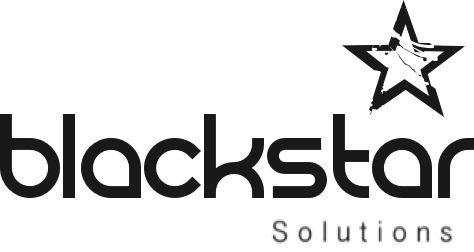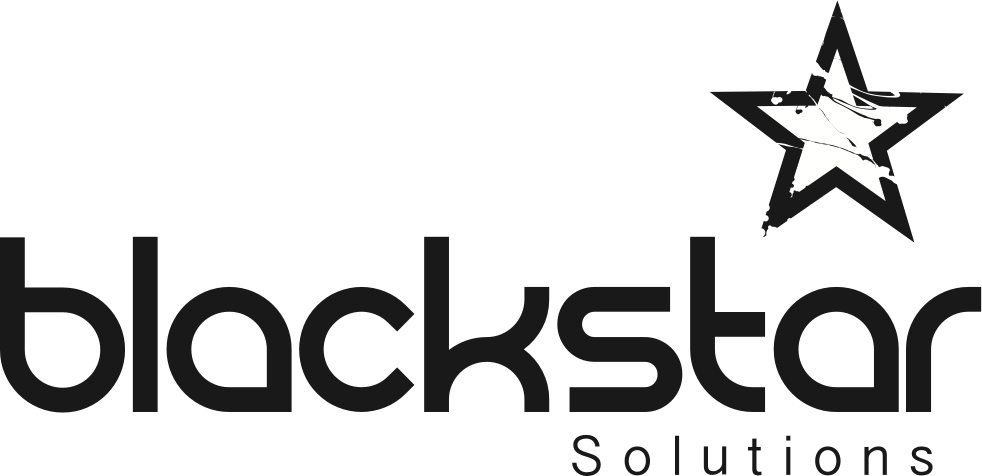Here at Blackstar, we meet with a wide variety of business customers looking to upgrade or replace their telephony and contact centre solutions. Sometimes they are looking for something quite simple (think phones on desks that ring with a bit of voicemail) and other times they’re looking for a solution that provides for a complex set of requirements that cater for Unified Communications, Contact Centre, PCI DSS Compliance, MiFID2 compliance, CRM integration, S4B integration, Active Directory integration, Thin Client integration and the list goes on!
Often these conversations will start with the customer stating that the basic requirement is for a cloud-based solution, before going on to discuss their requirements in more detail. It is only the detail which can determine whether or not a cloud solution is right for them and then what type of cloud solution. By what type of cloud solution, I do of course mean, private cloud or public cloud. These terms themselves can mean different things to different people, depending on who you are talking to.
For us, it’s quite simple; a dedicated private instance of a system in a data centre of your choosing managed in partnership with your provider or, shared infrastructure on a shared platform in a data centre stipulated, owned and managed by the provider.
Which of these is right for your business is what the process of discovery is all about when we engage with you. The following information should give you some insight into our thoughts on the matter.
Private vs. Public Cloud: What’s the Difference?
If you’ve been researching cloud telephony or UC, you’re probably well aware of the private vs. public cloud debate. Before you decide which end of the debate you side with, or more importantly which approach is right for your business, it’s important to know the difference between the two.
Public Cloud
For Public Cloud read ‘multi-tenanted cloud’, meaning that your system runs on the same infrastructure as many other customers. The main differentiator between public and private cloud is that you aren’t responsible for any of the management of a public cloud telephony or UC solution.
Your system resides in the provider’s data centres on shared infrastructure and the provider is responsible for the management and maintenance of the data centre. It’s likely you’ll access the data centre over shared connectivity and over the public internet. This type of cloud environment is appealing to many companies because it reduces lead times in testing and deploying new features or expanding capacity. However, the drawback is that many companies feel that security and control are lacking in a public cloud environment.
Maintenance windows (for software updates or bug fixes) are outside of your control and additional features, such as call recording or contact centre are limited to the bolt-on solution offered by the provider, which may not be right for your business. At the very least, your freedom to choose, negotiate and control is severely limited.
The advantages of a public cloud platform can be summed up in three words: simplicity, scale and savings. It’s simple to manage because all of the hardware and software is managed by your cloud provider. It scales up or down as your needs change. And it saves you money in OpEx, CapEx and excess capacity for peak demand periods.
Private Cloud
A private cloud telephony or UC solution resides on company’s internal network or in a hosted data centre where your system is protected behind a firewall and running on dedicated infrastructure. This can be a great option for companies who already have data centres on-site or perhaps have infrastructure as a service off-site because they can use their current infrastructure and connectivity. Private cloud offers an increased level of security and control and they share very few, if any, resources with other organizations.
In a private cloud environment, you remain in control of things such as maintenance windows, SIP carriers and extended functionality bolt-ons for things like PCI compliant call recording and contact centre. You can choose to retain as much or as little of the management overhead of the solution as you see fit.
When security and control outweigh cost savings, it’s time to think about a private cloud solution. A private cloud solution can leverage virtualization and converged infrastructure for cloud-like scale and efficiency, but in a private, dedicated system within your own data centre. The protected nature of a private cloud provides an extra layer of security and control to meet industry-specific compliance requirements.
Factors to consider when deciding upon your cloud strategy for voice/UC
What level of privacy and security do you need?
If you’re in a highly regulated industry – like financial services, government or healthcare – consider which data should be kept on-site versus a private cloud. Do you need to protect customer data or comply with legislation? In some cases, such as PCI DSS, moving elements of the payment process into the cloud can actually greatly simplify your PCI compliance.
A private cloud solution enables you to keep control of some parts of your communications infrastructure while still reaping cloud benefits like scalability, resiliency and cost management. So, if privacy and control are essential to your business, this route may provide the flexibility you need.
How important is reliability?
In terms of reliability, public cloud environments have good track records, but they’re not as reliable as private clouds. Think bandwidth. If your company generates heavy usage both inside and outside the organization, reliability is bound to be compromised. If your workforce needs immediate and reliable access to complex data – for example, large multimedia files – consider either a private cloud or storing the data on-site.
Another consideration is call quality. A contact centre needs 100 per cent dependability so that your customers can always get through. If this is essential for your business, consider a private cloud solution – a private cloud combined with an on-site back-up. Such redundancy protects you from costly downtime – if you lose your on-site system, the cloud is there. Likewise, if a network failure hits your cloud provider, your in-house infrastructure becomes your safety net. A private cloud deployment can allow for your solution to reside across multiple locations, including your key office locations so that your DR plan for your contact centre agents isn’t ‘taking their mobile home or working from Starbucks’ which is OK in theory but will be far from it in reality!
Will the communications system grow and flex with you?
The size and potential growth of your organization – both in terms of users and geographic locations – will also impact your decision about whether to use a private or public cloud. For organizations with fewer than 50 users, the public cloud environment is usually the most cost-effective as the additional monthly cost of private cloud provision doesn’t stack up for a smaller number of users. That said, should your business grow organically or through acquisition, you’ll start to find that a private cloud environment becomes more cost-effective.
You may want to have the ability to flex down as well as up. Most cloud providers will play on the fact that they allow you to reduce the number of users that you pay for on a monthly basis. You should read the small print carefully though as in practice there is usually a minimum number of users or a maximum % by which you can reduce, it’s rarely as flexible as the salesperson or the brochure would have you believe!
How can you connect to the cloud?
Public internet connectivity. In this model, public internet connections – like business-grade DSL, FTTC and leased lines – are used for voice and video services. This is an economical choice for small and growing organizations and is the normal way of connecting to a public cloud solution although can also be used for a private deployment.
Multiprotocol label switching (MPLS) uses high‐speed networks to transport packets over virtual links. The technology routes data efficiently because it communicates known information about the network’s topology. It also provides high call quality and a secure connection. You’re unlikely to utilise this for a public cloud deployment but in a private cloud topology, you can connect directly to the data centre from your own WAN and then leverage your WAN for additional redundancy and to ensure voice quality and security.
SD-WAN (software-defined wide area networking) allows organizations to reap the benefits of both public internet and MPLS. SD-WAN employs one or multiple network connections to prioritize applications to review and evaluate all network traffic. To ensure data and call quality are maximized, it can switch circuits quickly.
What goes in the cloud? What stays?
Experts agree that preparation is key to successfully using the cloud. So before moving forward, be sure to evaluate your needs. Start by assessing your current infrastructure, this is the time to identify the applications that really matter. Identify redundant functionality across applications, then focus on the key business and technical reasons for moving to the cloud. Use those decisions to shape the specific criteria for determining which applications should move to the cloud. Start with an overall digital strategy and work backwards, evaluating each offering in the marketplace against your value proposition.
What do you need to fulfil your strategy in the most effective way that gives you both the financial return, but also the capabilities that you’ll need as you go forward? The more refined your strategy is, the more tailored your cloud environments can be.
So which cloud strategy is right for you? It really does depend on which applications, why and the unique situation of your own business. Ultimately, it all boils down to control. A large company may choose a private cloud, while a smaller business might choose a public cloud but there are so many variables that can sway it in either direction that it’s impossible to give a ‘one size fits all’ answer or solution.
At Blackstar we live by our mantra which is to Listen, Innovate and Deliver. Each element of this mantra is important but the Listen part is especially important in the discovery phase if we are to fully understand what a customer wishes to achieve and how best to go about that. Simply having one approach to all customer needs (i.e. cloud only or on-site only) does not serve your customer base well because you will inevitably find yourself trying to convince someone to do something that doesn’t fit with their requirements, perhaps won’t even work or walking away from the opportunity. Perhaps only the latter of those options will sit well with your Operations Director or Support Desk Manager although it won’t please the Sales Director!
Thanks to our considerable experience, extensive supplier partnerships and our innovative ‘think outside the box’ approach, Blackstar is able to deliver on the promise of cloud for our customers, be that private or public cloud. Your solution can reside in your data centre, ours or a 3rd party provider of your choosing. You can mix and match your OPEX and your CAPEX to suit and still be assured that we will deliver against your requirements and deliver on the promise of cloud for your business, whatever shape that cloud needs to be.



















